How to Use Portals
m (→Configuring a Basic Portal) |
m (→Configuring a Basic Portal) |
||
| Line 129: | Line 129: | ||
</table> | </table> | ||
| − | <table | + | <table bgcolor="black" width=550> |
| + | <tr valign="top"> | ||
| + | <td> | ||
| + | <table bgcolor=#ffffb0 width=546> | ||
<tr valign="top"> | <tr valign="top"> | ||
<td>[[file:NotePad.PNG|link=]]</td> | <td>[[file:NotePad.PNG|link=]]</td> | ||
| Line 136: | Line 139: | ||
The difference between the two time setting shown is:- | The difference between the two time setting shown is:- | ||
*'''Trainz Minutes''' refers to the "virtual" minutes as shown on the Session clock in the Heads Up Display in Driver. For example: If you have set the Session time to run at 2x normal speed then 10 minutes of Session time will be 5 minutes according to your watch | *'''Trainz Minutes''' refers to the "virtual" minutes as shown on the Session clock in the Heads Up Display in Driver. For example: If you have set the Session time to run at 2x normal speed then 10 minutes of Session time will be 5 minutes according to your watch | ||
| − | *'''Real Minutes''' refers to the actual minutes as shown on your watch or computer date/time display, which may not be the same as shown on the Session clock as described above</td> | + | *'''Real Minutes''' refers to the actual minutes as shown on your watch or computer date/time display, which may not be the same as shown on the Session clock as described above |
| + | </td> | ||
</tr> | </tr> | ||
| − | </table></td> | + | </table> |
| + | </td> | ||
</tr> | </tr> | ||
</table> | </table> | ||
| + | </td> | ||
| + | </tr> | ||
| + | </table> | ||
| + | <br> | ||
<br> | <br> | ||
| Line 220: | Line 229: | ||
</tr> | </tr> | ||
</table> | </table> | ||
| − | <table | + | <table bgcolor="black" width=550> |
| + | <tr valign="top"> | ||
| + | <td> | ||
| + | <table bgcolor=#ffffb0 width=546> | ||
<tr valign="top"> | <tr valign="top"> | ||
<td>[[file:NotePad.PNG|link=]]</td> | <td>[[file:NotePad.PNG|link=]]</td> | ||
| Line 228: | Line 240: | ||
*It is NOT possible to easily reorder the vehicles in a consist | *It is NOT possible to easily reorder the vehicles in a consist | ||
*To add more of the same vehicles in a different location in the consist, add the vehicles as a separate entry in the list | *To add more of the same vehicles in a different location in the consist, add the vehicles as a separate entry in the list | ||
| − | *Add another consist and driver by clicking the '''''<span style="text-decoration: underline;">Add new consist</span>''''' link again</td> | + | *Add another consist and driver by clicking the '''''<span style="text-decoration: underline;">Add new consist</span>''''' link again |
| + | </td> | ||
</tr> | </tr> | ||
| − | </table></td> | + | </table> |
| + | </td> | ||
| + | </tr> | ||
| + | </table> | ||
| + | </td> | ||
</tr> | </tr> | ||
</table> | </table> | ||
| Line 322: | Line 339: | ||
----</td> | ----</td> | ||
</tr> | </tr> | ||
| − | </table></td> | + | </table> |
| + | </td> | ||
</tr> | </tr> | ||
</table> | </table> | ||
| − | <table | + | <table bgcolor="black" width=800> |
| + | <tr valign="top"> | ||
| + | <td> | ||
| + | <table bgcolor=#ffffb0 width=796> | ||
<tr valign="top"> | <tr valign="top"> | ||
<td>[[file:PencilTips.PNG|link=]]</td> | <td>[[file:PencilTips.PNG|link=]]</td> | ||
| − | <td>For "dead end" portals (those that have no exit) the '''Accept all trains''' option is the option that ''should'' be used</td> | + | <td>For "dead end" portals (those that have no exit) the '''Accept all trains''' option is the option that ''should'' be used |
| + | </td> | ||
| + | </tr> | ||
| + | </table> | ||
| + | </td> | ||
</tr> | </tr> | ||
</table> | </table> | ||
| Line 377: | Line 402: | ||
<td>[[file:PortalAcceptAllTrainsSpecifics.PNG|link=]]</td> | <td>[[file:PortalAcceptAllTrainsSpecifics.PNG|link=]]</td> | ||
<td> | <td> | ||
| − | <table | + | <table bgcolor="black" width=500> |
| + | <tr valign="top"> | ||
| + | <td> | ||
| + | <table bgcolor=#ffffb0 width=496> | ||
<tr valign="top"> | <tr valign="top"> | ||
<td>[[file:NotePad.PNG|link=]]</td> | <td>[[file:NotePad.PNG|link=]]</td> | ||
| Line 389: | Line 417: | ||
or is driven by ''any of'' the following drivers:- | or is driven by ''any of'' the following drivers:- | ||
*'''Alan''' | *'''Alan''' | ||
| − | *'''Andrea'''</td> | + | *'''Andrea''' |
| + | </td> | ||
</tr> | </tr> | ||
| − | </table></td> | + | </table> |
| + | </td> | ||
| + | </tr> | ||
| + | </table> | ||
| + | </td> | ||
</tr> | </tr> | ||
</table> | </table> | ||
Revision as of 08:26, 1 March 2022
The information in this Wiki Page applies to TANE, TRS19 and Trainz Plus.
Contents |
What is a Portal?
| Portals are track objects that can add and remove trains during the running of a Session |
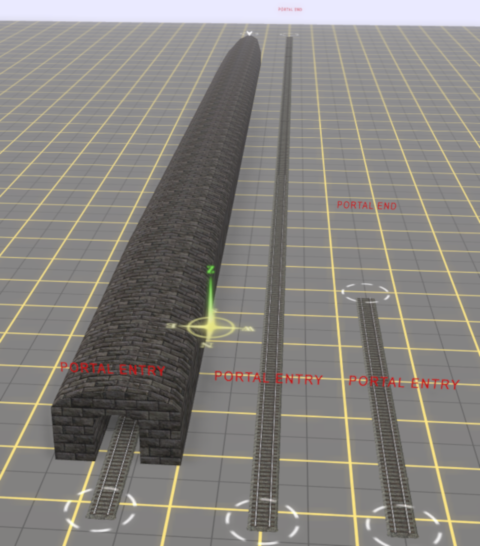 |
|
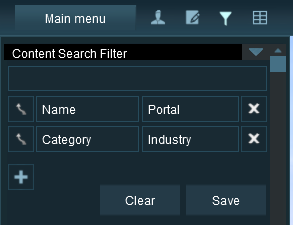 |
The quickest way to find all the train producing and consuming portals in the Surveyor Object Tool window is to set up a search filter. This will sort the portals you want from all the objects named "portal" such as tunnel portals.
|
||||||
|
Configuring a Basic Portal
Open the properties window of a portal in the route.
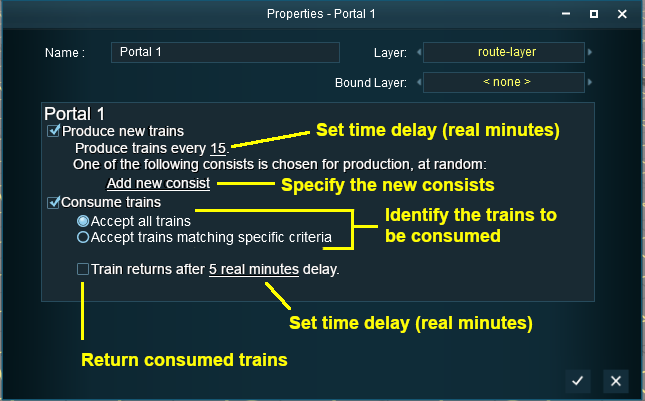 |
|
|||||||||
Produce Trains
 |
|
||||||
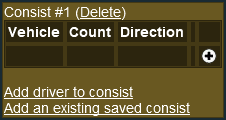 |
|
||||||
Construct a Consist
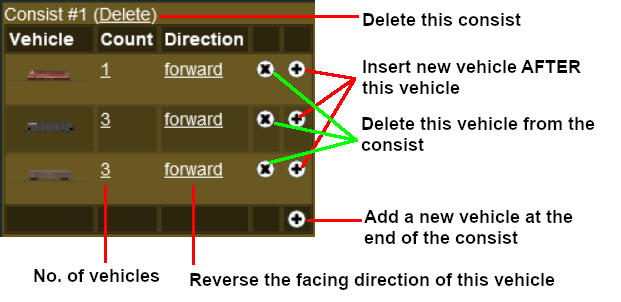 |
|
|||||||||
Add a Saved Consist
If you have already saved your consists in Trainz using the Trainz Tool then those consists can be quickly and easily added to the portal consist list.
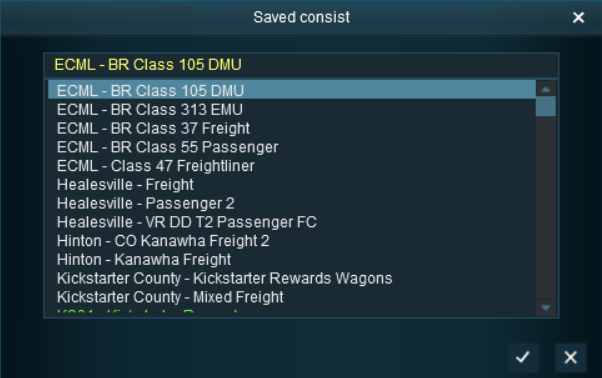 |
|
||||||
Add a Driver
 |
|
||||||
 |
For information on adding driver commands see the Trainz Wiki Page at:- |
Consume Trains
To remove trains from the Session
 |
|
||||||
|
Consume Only Specific Trains
After selecting the option Accept trains matching specific criteria a new set of controls will appear
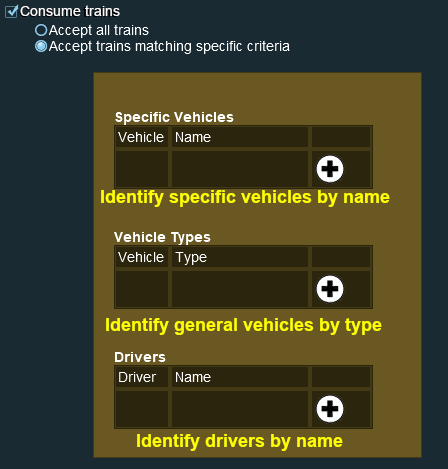 |
|
||||||
An example:-
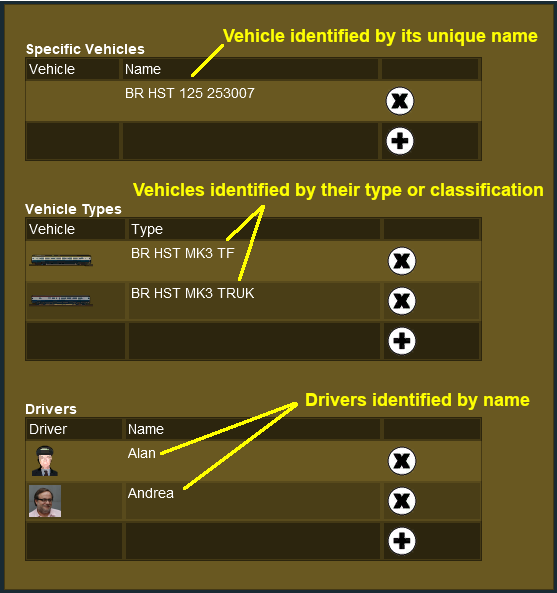 |
|
Return Consumed Trains
To return consumed trains back into the Session

|
|
||||||||||||||
| A train that has been returned after entering a portal will return to the Session with any remaining driver commands still in its Driver Schedule. It will then immediately start obeying those commands. |
| If the driver command that sent a train to the consuming portal was the final command in its schedule, then it will emerge from the portal with an empty Driver Schedule. It will come to a halt immediately after leaving the portal. |
Configuring an Enhanced Portal
There are a number of portals available on the DLS that have additional features or capabilities that are not found in the basic portals built into Trainz. There are also Session Rules available on the DLS that will give additional features or capabilities to the basic portals.
Quick Portal Manager Standard Edition Rule (SP2 and later)
This is a Session Rule, by pguy, that manages the portals and adds flexible timetables to their operations. It is available on the DLS.
- <kuid2:61392:5011:45> - correct at the time this document was written
Portals and the UDS (Unified Driver Surveyor) Interface
The UDS is an option for rapid switching, in both directions, between Driver and Surveyor. It is available in TRS19 Platinum Edition and Trainz Plus only. The UDS does not affect the operation of portals but it has revealed one previously unnoticed property of portals.
A train that is driven into a portal and later returned to the layout will be returned in the same layer as the portal and not in the trains originally assigned layer. Trains that are produced by a portal will be assigned to the same layer as the portal. This has possibly always been the case with portals but was probably unnoticed until the arrival of the UDS. It seems to have no other noticeable effect on trains.
This could become an issue if you make the switch from Driver to Surveyor after a train has been returned to the layout from a portal. For example, if a train is originally in a Session Layer then it is part of a Session. If it is returned from a portal then it will now be in a Route Layer and will be part of the Route. If you then switch from Driver to Surveyor and save the Route then the train will be saved in the Route not in the Session. If this is an issue then the remedy is to open the property dialogue window of any wagon in the train after it has left the portal and change its assigned layer to the correct one. This will set all vehicles in that train to the same correct layer.
Trainz Wiki
 |
More Tutorials and Guides to Using Trainz |
This page was created by Trainz user pware in July 2018 and was last updated as shown below.
